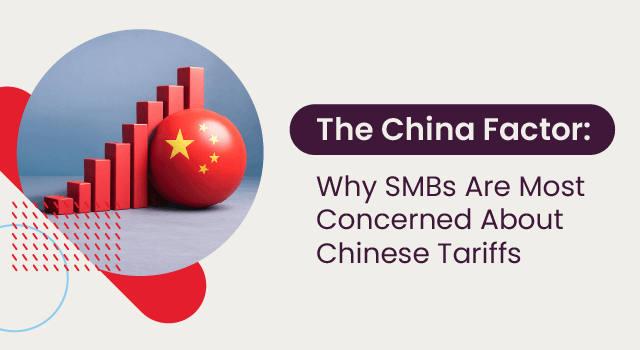What’s in this blog?
Inventory turnover quantifies how often a business sells or uses its inventory over a period, usually over a year. It’s an essential measure of inventory management efficiency, and there is no single ideal inventory turnover rate. The best level for your business will depend on the industry, supply chain efficiency, and demand variability.
Inventory turnover can vary significantly depending on the industry. Industries with high inventory turnover have strong sales and efficient inventory management. Low inventory turnover may result from slower sales and inefficient inventory practices. Expect, for example, higher turnover in a grocery store than in a used car dealership—the disparity results largely from different sales velocities.
This is why inventory turnover comparisons are only meaningful in the same industry. It’s also vital to measure the turnover rate with other metrics, including:
- Stock-out rate: The number of times you cannot supply a customer with a required product.
- Days sales of inventory: The average time it takes to sell an inventory item.
Understanding Inventory Turnover
The average turnover rate is calculated as follows:
- Inventory Turnover = COGS/Average Inventory
Where:
- The Cost of Goods Sold (COGS): is the cost of all materials and products sold over the chosen period.
- Average inventory: is calculated in one of several ways. Below are two of the most common:
- Average inventory = (Opening inventory + Closing inventory)/2
- Weighted averages are considered more accurate but require more complex calculations. The method weighs the values according to how long the inventory existed through the period.
Inventory turnover ratio by industry
CSI Market is an independent digital financial media company. It provides reports on the US economy, including financial indicators. The company also publishes inventory turnover benchmarks by industry.
Introduction to CSI market
- Financial 227.47
- Services 23.84
- Retail 13.79
- Energy 9.97
- Transportation 9.05
- Technology 7.82
- Utilities 7.02
- Consumer Discretionary 5.94
- Consumer Non-Cyclical 5.73
- Basic Materials 5.02
- Conglomerates 3.71
- Healthcare 3
- Capital Goods 2.44
Source: CSIMarket Q1 2024
Why does the financial industry have such a high inventory turnover rate?
The financial industry doesn’t necessarily have physical inventory. It deals with financial assets, which are intangible and exist electronically. Financial assets may be seen as a form of inventory.
The inventory turnover of the assets is high. Financial institutions regularly buy and sell financial instruments to improve their client portfolios. They also offer loans and mortgages, effectively creating loan turnover. These businesses must frequently buy and sell in pursuit of profit.
The financial asset values change rapidly. Turnover in this industry is measured in the value of assets bought and sold, not physical movements.
Why does the service industry have such a high inventory turnover rate?
In the service industry, “inventory” can be seen as the service provider’s capacity to deliver services. A business cannot store inventory and use it later. It provides the service, and the capacity is used.
To survive and grow, the service industry must match capacity with customer demand. High turnover reflects efficient capacity use.
Demand for services can fluctuate throughout the day, week, or season. Efficient businesses match staffing and service availability with changing demand, maximizing their service capacity turnover.
Why does the transportation industry have such a high inventory turnover rate?
The transport industry has two types of inventories: physical inventories of vehicles and equipment and carrying capacity, which is measured by weight or volume.
Transportation companies keep vehicles on the road as much as possible. Empty vehicles represent lost revenue, and these companies cannot store capacity for future use. Transportation businesses design efficient routes to minimize distance and maximize capacity utilization, which results in high vehicle capacity turnover.
Transportation companies adjust their offerings to match changing demand. The better they adapt capacity to meet changing needs, the higher their inventory turnover.
How does inventory optimization improve inventory turnover rates?
Inventory optimization increases turnover rates by reducing waste and improving inventory processes. Inventory managers embarking on inventory optimization strategies expect the following:
Excess inventory reduction
Inventory optimization minimizes excess inventory through
- Better demand forecasting: By understanding future demand patterns, businesses can order the right amount of inventory – no excess or short inventories.
- Just-in-time inventory management: JIT aims to receive inventory only when it’s needed.
- Minimizing inventory holding costs: Lower inventories mean less warehouse space, less handling, and lower insurance and capital costs.
Improved demand forecasting
When inventory is well-managed and accurate, it provides a reliable base for forecasting
- Using historical sales: Accurate inventory helps avoid demand fluctuations caused by stock-outs. In a controlled environment, forecasting models can identify demand trends more clearly.
- Advanced forecasting models: Advanced models can use accurate inventory and sales figures to isolate true demand drivers.
- Real-time demand monitoring: Real-time demand monitoring enables quicker reactions as demand behavior changes.
Efficient supply chain management
Inventory optimization plays a crucial role in streamlining several key supply chain processes.
- Supplier relationship management: Suppliers get more accurate demand forecasts and can better manage their resources. Real-time inventory data means that all supply chain participants have an accurate inventory view.
- Replenishment optimization: Accurate up-to-date data enables safety stock reductions. Purchase order placements are automated, removing the human element.
- Logistics and transportation efficiency: Inventory optimization improves shipment planning, resulting in lower costs and more efficient transport systems.
Focus on product mix and SKU rationalization
Inventory optimization helps with product mix and SKU optimization.
- Slow-mover identification: Inventory data reveals slow-moving items or those making low margins.
- Allocation of resources to high-demand products: Use the data to focus on high-performing products and drop slow movers.
- SKU rationalization strategies: Dedicate more resources to promoting your core product mix with fewer SKUs.
Technology and data analytics
Technology and data analytics provide real-time inventory tracking and dynamic forecasting. Users can expect the following improvements:
- Analysis of sales data and trends: Data analytics tools analyze historical sales data, market trends, and promotional planning. This data helps generate better forecasts, which in turn means more accurate orders, reducing stock-outs and excesses.
- Data-driven decision-making: With real-time inventory and sales data and more accurate demand forecasts, management can make data-driven decisions. The result is improved inventory management, reduced costs, happier customers, and improved profits.
Embrace technology and transform your operations
Inventory managers or demand planners can transform business operations by embracing technology and inventory optimization. A data-driven approach helps businesses order the right products for delivery at the right time. Inventories are reduced, costs are contained, and there is less risk of stock-outs. Reduced inventories release capital for more important strategic investments.
Well-managed inventory translates into increased profitability, improved customer satisfaction, and a strategic advantage.




